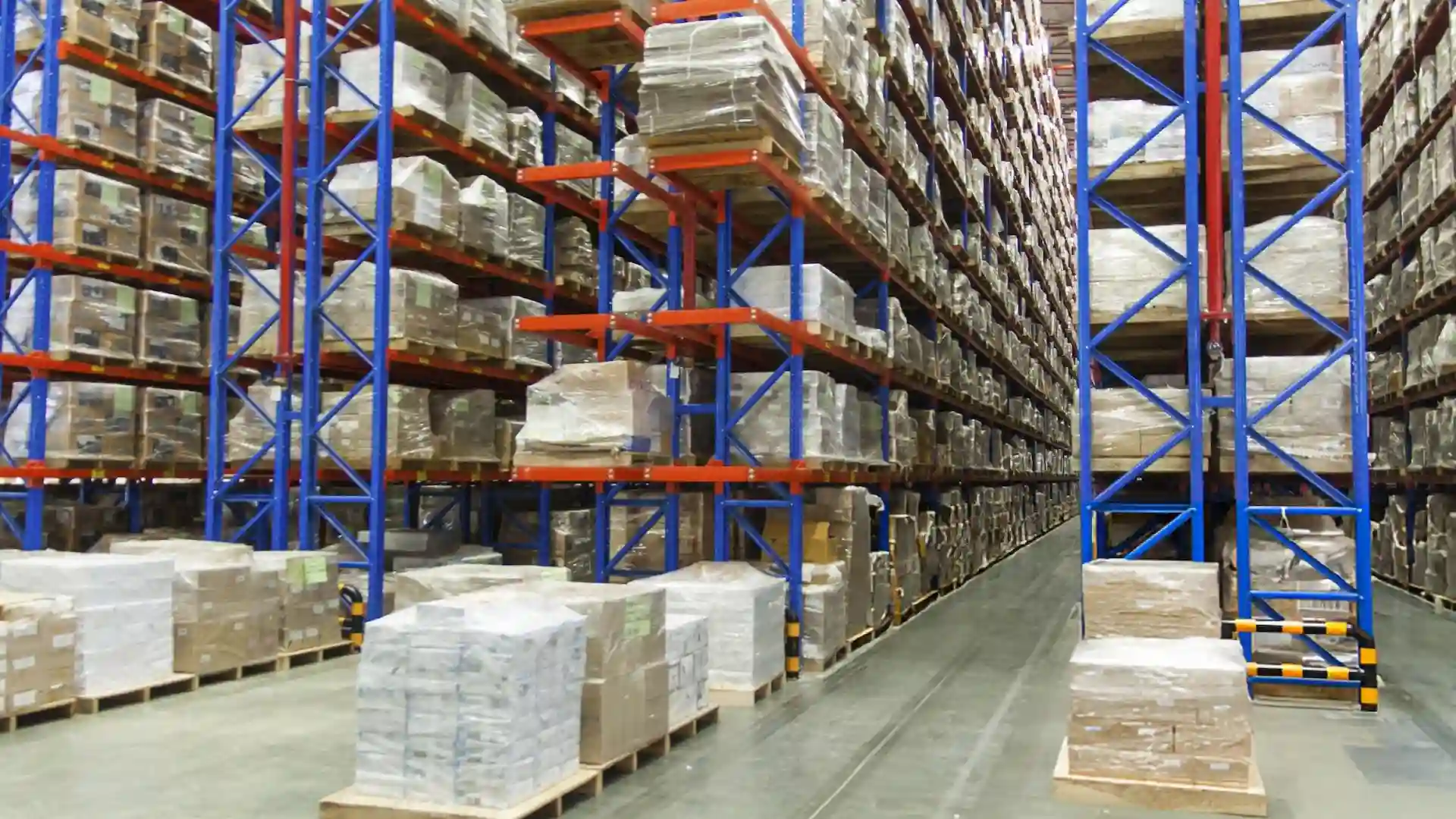Breaking into International Markets: Tips and Best Practices for Successful Global Expansion

Expanding into international markets is a powerful way for businesses to reach new audiences, increase revenue, and build a global presence. However, stepping into global markets presents unique challenges that require strategic planning and thorough market research. This guide offers actionable tips and best practices for successful global expansion to help your business flourish across borders.
Why Consider International Expansion?
Increased Revenue Potential
Access to international markets can boost revenue by opening up sales channels beyond your domestic borders. With the right international SEO and targeted marketing strategy, businesses can tap into previously unreachable customer bases.
Enhanced Brand Awareness
Expanding globally increases brand visibility, making your brand recognizable on a larger scale. Effective brand positioning and promotional campaigns tailored for each market help reinforce your brand identity and build trust with local consumers.
Steps for Breaking into International Markets
1. Conduct Thorough Market Research
Market research is foundational for any international expansion plan. Start by evaluating potential markets to understand consumer behavior, market trends, and demand for your product or service. Assess the competitive landscape, identifying key players and unique value propositions that may already resonate with the local target audience.
- Competitive Analysis: Study competitors’ strengths and weaknesses. This will help in crafting a differentiated marketing strategy and recognizing opportunities.
- Government Resources: Many governments offer resources and insights for businesses planning to enter foreign markets, often providing data on tariffs and duties, export regulations, and regulatory compliance.
2. Understand and Adapt to Cultural Nuances
Expanding into global markets requires cultural sensitivity. A deep understanding of local customs, beliefs, and languages is essential for effective cultural adaptation.
- Localization: Go beyond simple language translation. Adapt your branding, content, and even product features to fit cultural preferences. This includes adjusting messaging to suit local humor, slang, and preferences.
- Product Adaptation: Certain products may require tweaks or changes to appeal to local tastes. For instance, food products may need ingredient adjustments to comply with regulatory standards or to align with cultural preferences.
3. Develop a Robust Entry Strategy
Deciding how to enter a new market is crucial. There are various entry strategies that businesses can consider, each with distinct advantages:
- Direct Exporting: Exporting directly from your home country to the target market. While it offers control, it may require setting up local shipping logistics.
- Strategic Partnerships: Partnering with local businesses provides established distribution channels and customer trust. It's a faster way to establish a presence, though often less profitable in the long term.
- E-commerce Platforms: Leveraging popular e-commerce sites like Amazon, Alibaba, or Mercado Libre can offer access to vast target audiences without needing a physical presence.
4. Tailor Your Marketing Strategy to Each Market
A targeted marketing strategy is vital in making a successful entry into international markets.
- International SEO: Optimize your website and digital assets for local search engines. This includes creating local content, using region-specific keywords, and possibly hosting your site on a regional domain.
- Social Media Marketing: Use regionally popular platforms and influencers to gain traction. For instance, WeChat and Sina Weibo are essential in China, while Line is popular in Japan.
- Online Advertising: Ads should be localized to reflect the language, tone, and culture of the market. Digital ads on platforms like Google and Facebook often require adjustments in imagery and messaging to resonate with local audiences.
5. Set Up Localized Payment and Shipping Solutions
Successful global expansion hinges on simplifying payment and delivery. Ensure your website supports multiple payment options, including popular local payment methods like Alipay, PayPal, or even COD (Cash on Delivery) in certain regions.
- Payment Solutions: Consider integrating global payment platforms that support multiple currencies and payment methods.
- Shipping Logistics: Work with reliable international logistics providers. Companies like DHL, FedEx, and UPS offer comprehensive global logistics, but partnering with local carriers can enhance service reliability and reduce costs.
6. Stay Compliant with Local Regulations and Tariffs
Understanding the regulatory landscape is critical. Regulatory compliance and awareness of tariffs and duties protect your business from legal issues and ensure a smooth operational flow.
- Export Regulations: Check your target country’s import/export requirements, particularly if you’re in a regulated industry like pharmaceuticals, technology, or food.
- Tariffs and Duties: Research the tariff structure in your target market to avoid unexpected costs. Many nations provide specific guidelines for foreign businesses, which can be found on government and trade organization websites.
Best Practices for Long-Term Success in International Markets
1. Establish Clear Pricing and Sales Channels
Pricing can make or break your success in a new market. Different regions may have varying levels of purchasing power, so set a pricing strategy that matches local affordability without compromising profitability.
- Sales Channels: Evaluate both online and offline sales channels that best serve the region’s purchasing habits.
- Pricing Strategy: Consider pricing adjustments or promotions specific to each market, but ensure your pricing aligns with the brand’s global perception.
2. Build a Strong Customer Support System
Good customer service goes a long way in building trust with new audiences. Providing support in local languages and understanding customer preferences can make a difference in user satisfaction.
- Customer Service: Ensure your team is prepared to handle questions and complaints in the local language. This may involve hiring native-speaking support staff or partnering with local customer service providers.
- Customer Feedback: Collecting feedback is invaluable for product adaptation and improving your operational strategy. Make sure feedback is actively sought and addressed.
3. Focus on Sustainable and Scalable Business Practices
As businesses grow across borders, maintaining quality and consistency is critical. Ensure that your supply chain management supports sustainable growth and adheres to ethical standards.
- Sustainable Practices: Modern consumers value brands that prioritize sustainability. Use eco-friendly materials, and ensure your processes comply with environmental regulations in each market.
- Business Scalability: Consider potential scalability when choosing suppliers and setting up your operational frameworks. This will allow you to expand to additional markets more seamlessly.
4. Leverage Technology Integration for Efficiency
Leveraging technology can simplify global operations and reduce the manual workload associated with international expansion.
- Technology Integration: Automate processes such as inventory tracking, order fulfillment, and customer relationship management (CRM) to handle demand and improve customer satisfaction.
- Performance Metrics: Track performance with analytics to measure key performance indicators (KPIs) such as sales, customer acquisition costs, and customer retention rates. Data-driven insights are crucial for making strategic adjustments.
5. Monitor and Adapt Based on Market Trends
Stay agile and monitor market trends and consumer behavior in each region. Trends can shift rapidly due to economic, political, or cultural changes, so it’s essential to regularly assess and adjust your marketing strategy and operations.
- Risk Assessment: Conduct regular risk assessments to identify potential threats and opportunities. This includes evaluating economic stability, political climates, and even social issues that may impact your business.
- Lead Generation and Networking: Tap into business networks, attend trade shows, and participate in industry-specific events to generate leads and establish credibility in each new market.
Challenges of International Expansion and How to Overcome Them
1. Navigating Legal and Regulatory Complexities
Every country has its own legal landscape, which includes labor laws, tax obligations, and industry-specific regulations. Navigating these can be overwhelming but necessary for successful global expansion.
- Solution: Partner with legal experts and consult local business authorities. Staying informed helps you anticipate and meet regulatory requirements more effectively.
2. Managing Brand Consistency Across Markets
Balancing global brand consistency with local adaptation is crucial yet challenging. You want to maintain a unified brand image without sacrificing local relevance.
- Solution: Establish global branding guidelines that allow flexibility for regional customization. Train local teams to understand and apply these guidelines in culturally appropriate ways.
3. Adapting to Varied Consumer Behaviors
Consumer preferences vary dramatically across countries. What works in one market may not resonate in another, impacting product adaptation and marketing efforts.
- Solution: Regularly conduct consumer behavior studies to understand local preferences and ensure that your product and messaging are continually refined to meet consumer expectations.
4. Efficient Supply Chain and Inventory Management
Maintaining a seamless supply chain management process across borders can be difficult due to logistical delays, currency fluctuations, and unpredictable demand.
- Solution: Use inventory management systems that track real-time data. These insights can help in making swift adjustments, reducing stockouts, and optimizing delivery times.
Conclusion
Expanding into international markets is an exciting yet complex journey. Success requires careful market research, cultural adaptability, and strategic entry planning. By implementing localized marketing strategies, optimizing payment solutions and logistics, ensuring regulatory compliance, and maintaining consistent customer support, your business can establish a thriving presence in new markets. Remember, global expansion is an ongoing process of learning and adaptation. Staying informed on market trends, building strong partnerships, and continually refining your strategies will help your business grow sustainably in the global marketplace.
Embark on your international expansion journey with confidence, armed with these tips and best practices for conquering global markets and building lasting relationships worldwide.
FAQ: Breaking into International Markets
What is the best way to enter international markets for small businesses?
For small businesses, starting with low-risk entry strategies like exporting through e-commerce platforms or establishing strategic partnerships can be highly effective. These approaches allow businesses to reach international customers without the high upfront costs of setting up a local presence. Leveraging local market research and competitive analysis helps identify the best market entry approach based on demand and audience preferences.
How do I ensure compliance with international regulations and tariffs?
To ensure regulatory compliance when expanding internationally, consult local experts or legal advisors specializing in export regulations and tariffs and duties. Many governments provide resources to help businesses understand import/export requirements, tax obligations, and industry-specific standards. Regular updates to trade policies mean businesses should routinely check for changes affecting their products and operations.
How can I adapt my marketing strategy for different international markets?
To effectively market in diverse global markets, focus on localization and cultural adaptation. This includes translating content and tailoring your marketing strategy to match regional preferences, customs, and popular platforms. Additionally, optimizing for international SEO with region-specific keywords and social media marketing on local platforms can increase brand awareness and engagement with your target audience.
What payment and shipping solutions should I consider for international customers?
For a smooth global expansion, offer payment solutions that support multiple currencies and local payment methods, such as PayPal, Alipay, or Cash on Delivery (COD). Reliable shipping logistics providers like DHL, UPS, or local carriers ensure prompt and cost-effective deliveries. Integrating these options into your website improves customer satisfaction and encourages repeat purchases.
What are the main challenges of global expansion, and how can I address them?
Key challenges of international expansion include navigating complex regulatory compliance, maintaining consistent brand positioning, and adapting to varied consumer behavior. Address these by conducting thorough market research, establishing flexible branding guidelines, and utilizing customer feedback to continuously improve your approach. Partnering with local experts and staying informed on market trends can further mitigate risks and increase the chances of long-term success.

.svg)
.svg)
.svg)




